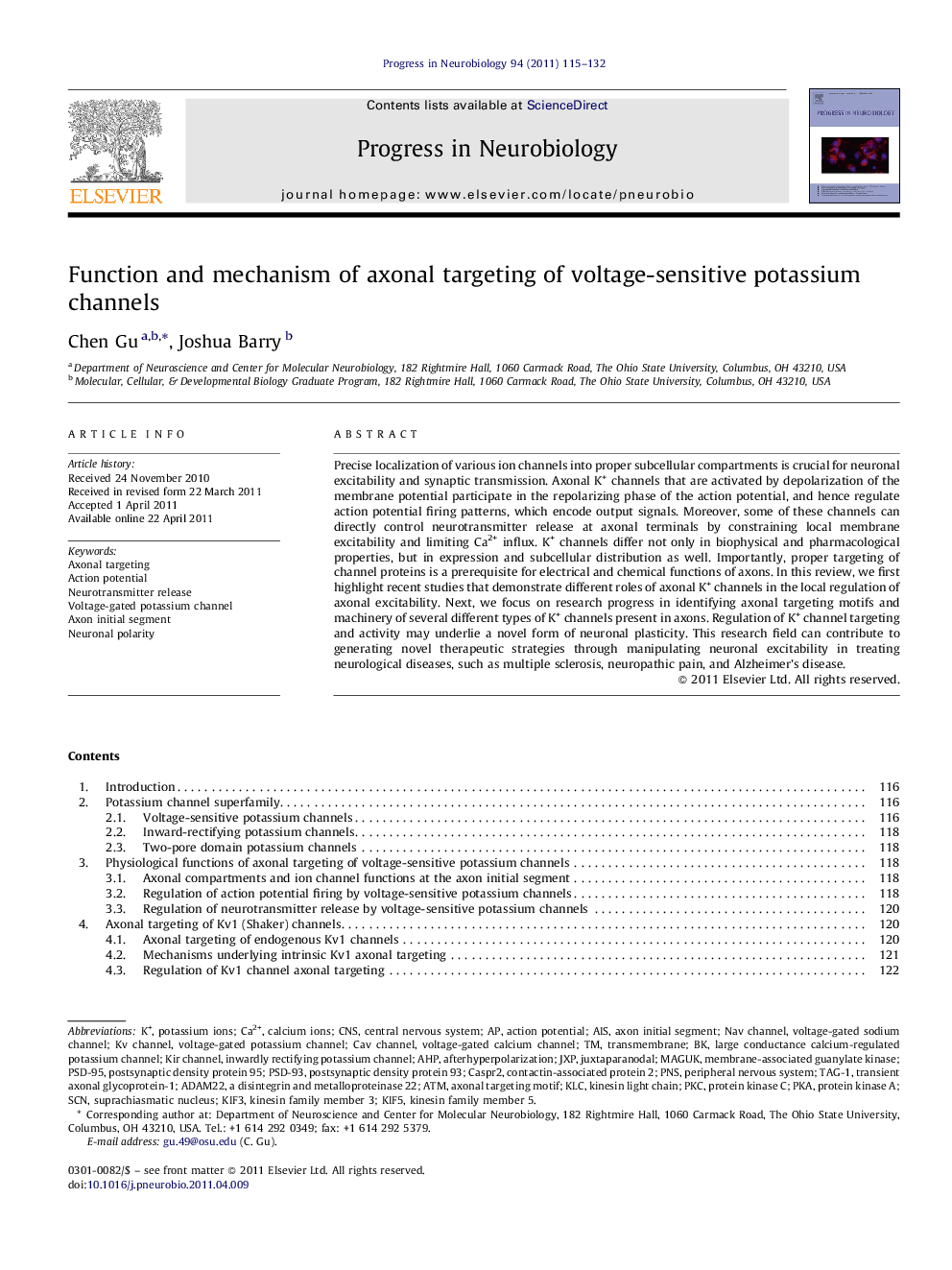| Article ID | Journal | Published Year | Pages | File Type |
|---|---|---|---|---|
| 4353600 | Progress in Neurobiology | 2011 | 18 Pages |
Precise localization of various ion channels into proper subcellular compartments is crucial for neuronal excitability and synaptic transmission. Axonal K+ channels that are activated by depolarization of the membrane potential participate in the repolarizing phase of the action potential, and hence regulate action potential firing patterns, which encode output signals. Moreover, some of these channels can directly control neurotransmitter release at axonal terminals by constraining local membrane excitability and limiting Ca2+ influx. K+ channels differ not only in biophysical and pharmacological properties, but in expression and subcellular distribution as well. Importantly, proper targeting of channel proteins is a prerequisite for electrical and chemical functions of axons. In this review, we first highlight recent studies that demonstrate different roles of axonal K+ channels in the local regulation of axonal excitability. Next, we focus on research progress in identifying axonal targeting motifs and machinery of several different types of K+ channels present in axons. Regulation of K+ channel targeting and activity may underlie a novel form of neuronal plasticity. This research field can contribute to generating novel therapeutic strategies through manipulating neuronal excitability in treating neurological diseases, such as multiple sclerosis, neuropathic pain, and Alzheimer's disease.
► In the K+ channel superfamily, there are several groups of channels that are activated by the membrane potential and localize on the axonal membrane. ► These channels differentially regulate axonal electrical properties and neurotransmitter release. ► Precise targeting of channel proteins to the correct axonal location is a prerequisite for proper axonal functions. ► Recent studies show different mechanisms are involved in the axonal targeting of the channel proteins.
